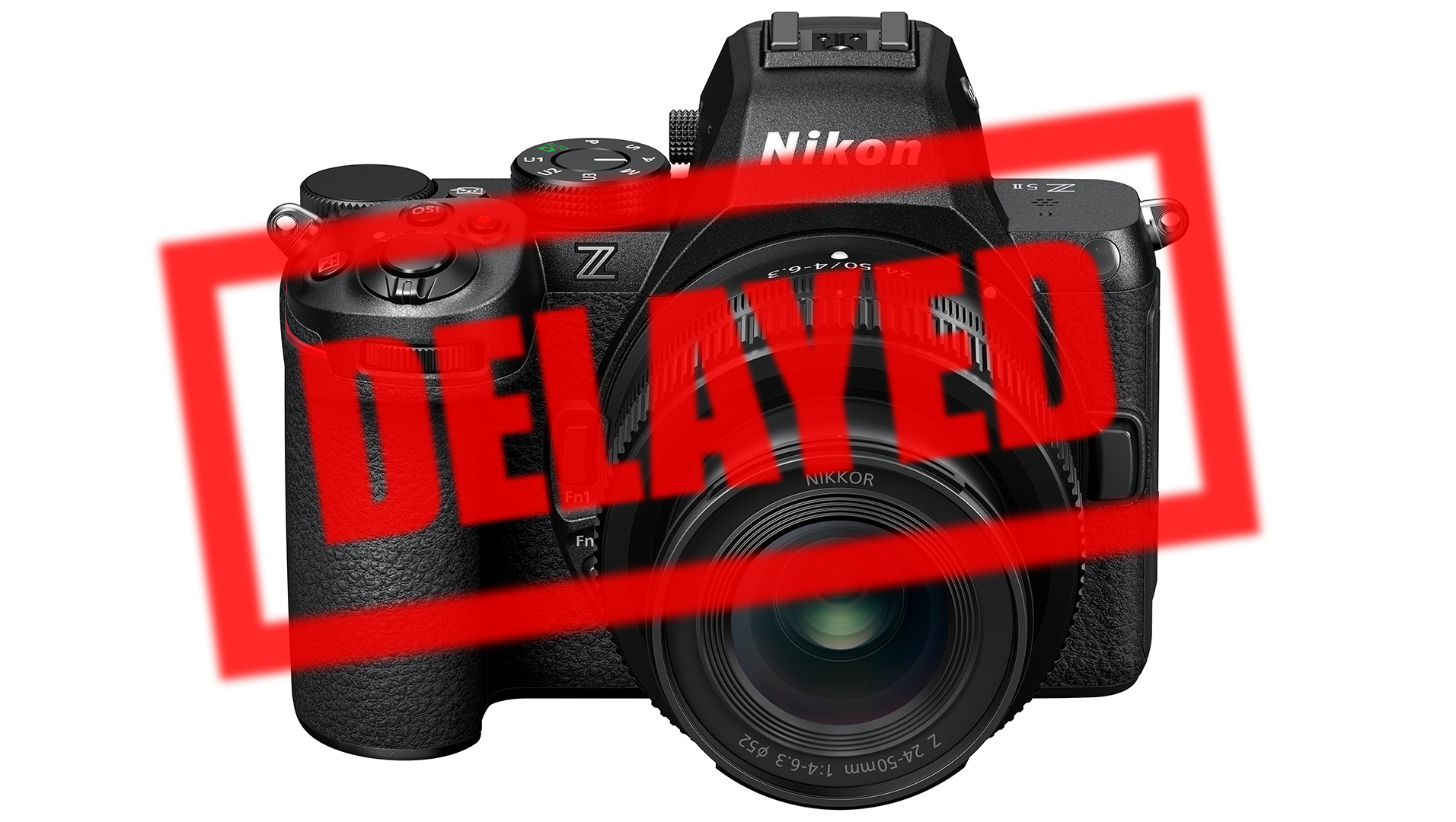The best extension tubes: shoot close-ups and macro photos on the cheap
The best extension tubes are a cheap and effective way to convert a regular lens into a macro lens for close-ups

Looking for the best extension tubes for your Canon, Nikon, Sony or other make of camera? This guide will find you the right fit, and help you find a set at the right price.
Few photos can match the initial wow-factor as a well composed, in-focus close-up of a tiny subject like an insect or flower. You can get the same effect by investing in one of the best macro lenses, but these tend to be pricey propositions, which can be off-putting when you'll only be using a such specialist lens occasionally. But there is another way...
With the best macro extension tubes, you can essentially convert a regular zoom or prime lens into a macro lens by dramatically shortening its minimum focus distance. An extension tube isn't much more than a hollow ring of metal, as there are no lens elements inside. All it does is act as a spacer between your camera and lens so you can get closer to your subject and still maintain focus. The deeper the extension tube, the closer you can focus to your subject, and the greater the subject magnification. What's more, with many extension tubes available as a set of two or three tubes, you can even stack them together to get even greater magnification.
A word of warning though - the greater the extension length and corresponding magnification, the shallower the depth of field available at a given lens aperture. This means you'll need to stop down your aperture if you want to maintain a practical depth of field, which can in turn necessitate a slower shutter speed and the use of a tripod to avoid camera shake. Check out some of the best tripods for photographers.
A feature to watch out for - and something that separates the cheapest extension tubes from more upmarket offerings - is the inclusion of electrical contacts. An autofocus lens will have electrical contacts just inside its lens mount which carry data signals and power between your camera body and the lens. A cheap extension tube without electrical passthrough contacts will effectively sever this connection, meaning you'll lose autofocus capability and auto exposure metering. You'll then be forced to use manual focus and manual exposure. However, this needn't be a deal-breaker, as the slow, methodical nature of macro photography can lend itself to manual shooting.
In this guide we've separated the best macro extension tubes into products designed for specific camera/lens mounts: Canon EF, Canon RF, Nikon F, Nikon Z, Sony E, Fujifilm X and Micro Four Thirds. Skip to the section for your camera system to see the best extension tubes that are compatible with your camera, and the most up-to-date prices.
Read more: How to use extension tubes
The best extension tubes
Why you can trust Digital Camera World
Best extension tubes for Canon EF
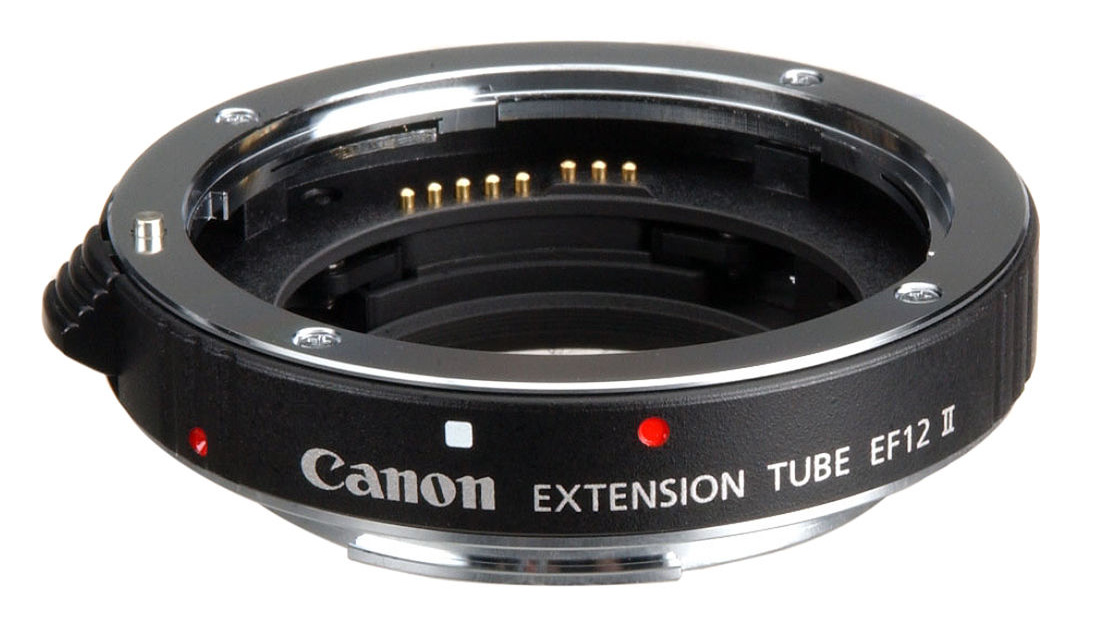
1. Canon Extension Tube EF 12 II
Specifications
Reasons to buy
Reasons to avoid
It’s unusual to find own-brand macro extension tubes, so you may be surprised to see Canon offers two options: 12mm, and 25mm. This mark II version is compatible with most EF and EF-S lenses, and being built by Canon, you can expect top-notch build quality and flawless compatibility with both your camera and Canon lens. Electrical contacts maintain full auto shooting capabilities, and it’s possible to stack both a 12mm tube and a 25mm tube for greater magnification.
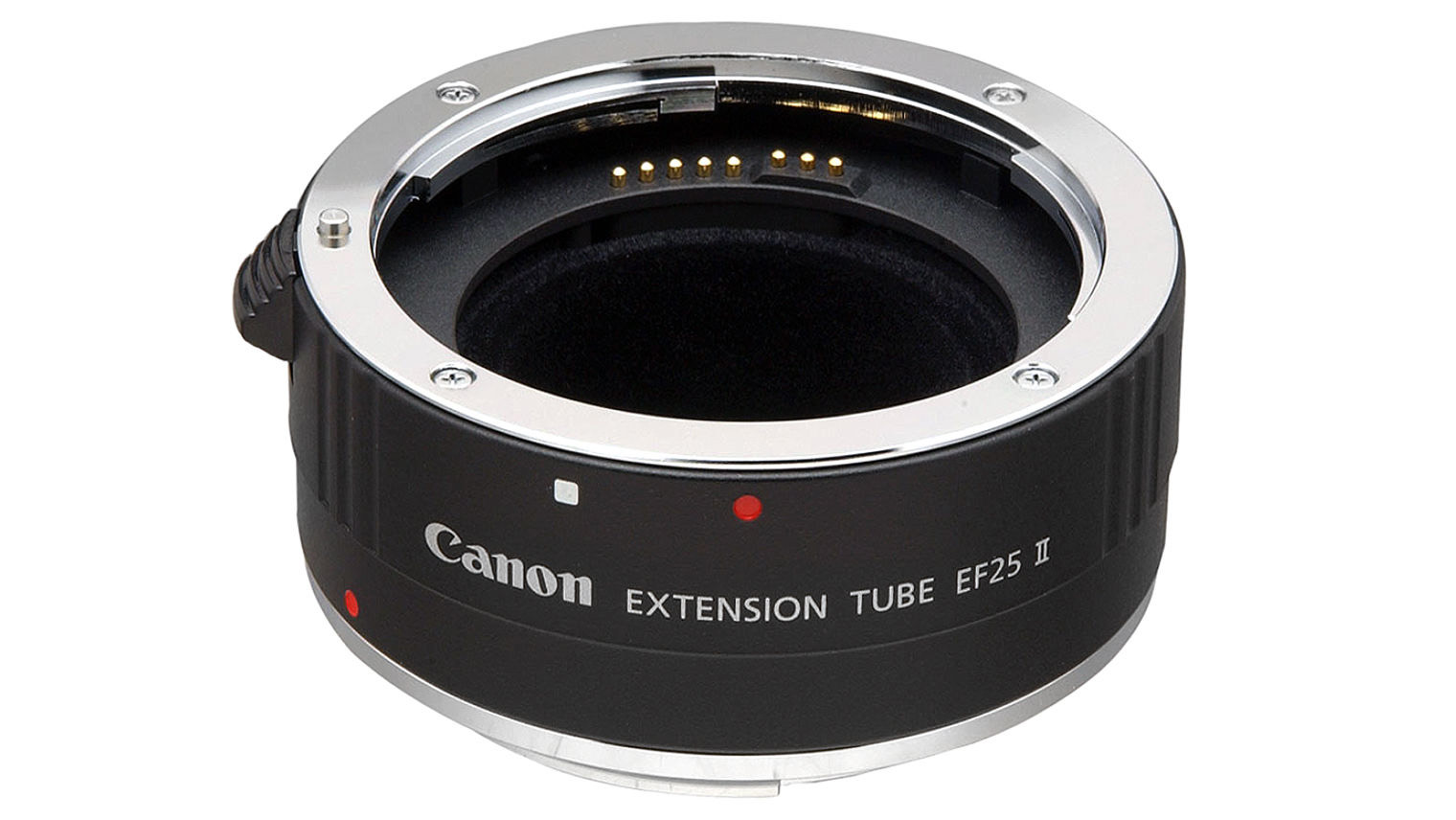
2. Canon Extension Tube EF 25 II
Specifications
Reasons to buy
Reasons to avoid
If you need even greater macro magnification than the Canon Extension Tube EF 12 II offers, there’s always its 25mm sibling. It shares all the same features and is also fully compatible with the vast majority of Canon EF and EF-S optics. However, with greater magnification also comes a bigger price tag. Combine this with the EF 12 II extension tube and the total outlay won’t be far off the cost of a manual focus macro lens from a company like Laowa.
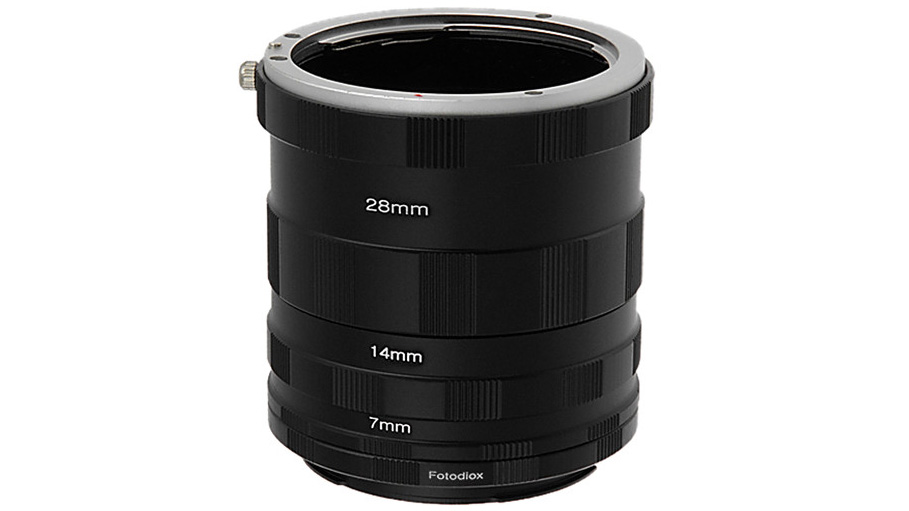
3. Fotodiox Macro Extension Tube Set
Specifications
Reasons to buy
Reasons to avoid
Sub $20 camera accessories are usually fairly depressing propositions, but here you get a set of three macro extension tubes which can open up a whole world of new close-up shooting possibilities. Obviously there are some compromises to be made – you can forget about extras like electrical contacts to maintain autofocus, meaning shooting in manual mode is the order of the day here. But take your time to focus and fine tune your exposure and these 7mm, 14mm and 28mm tubes offer a great range of macro magnifications when used separately, and even more when combined together.
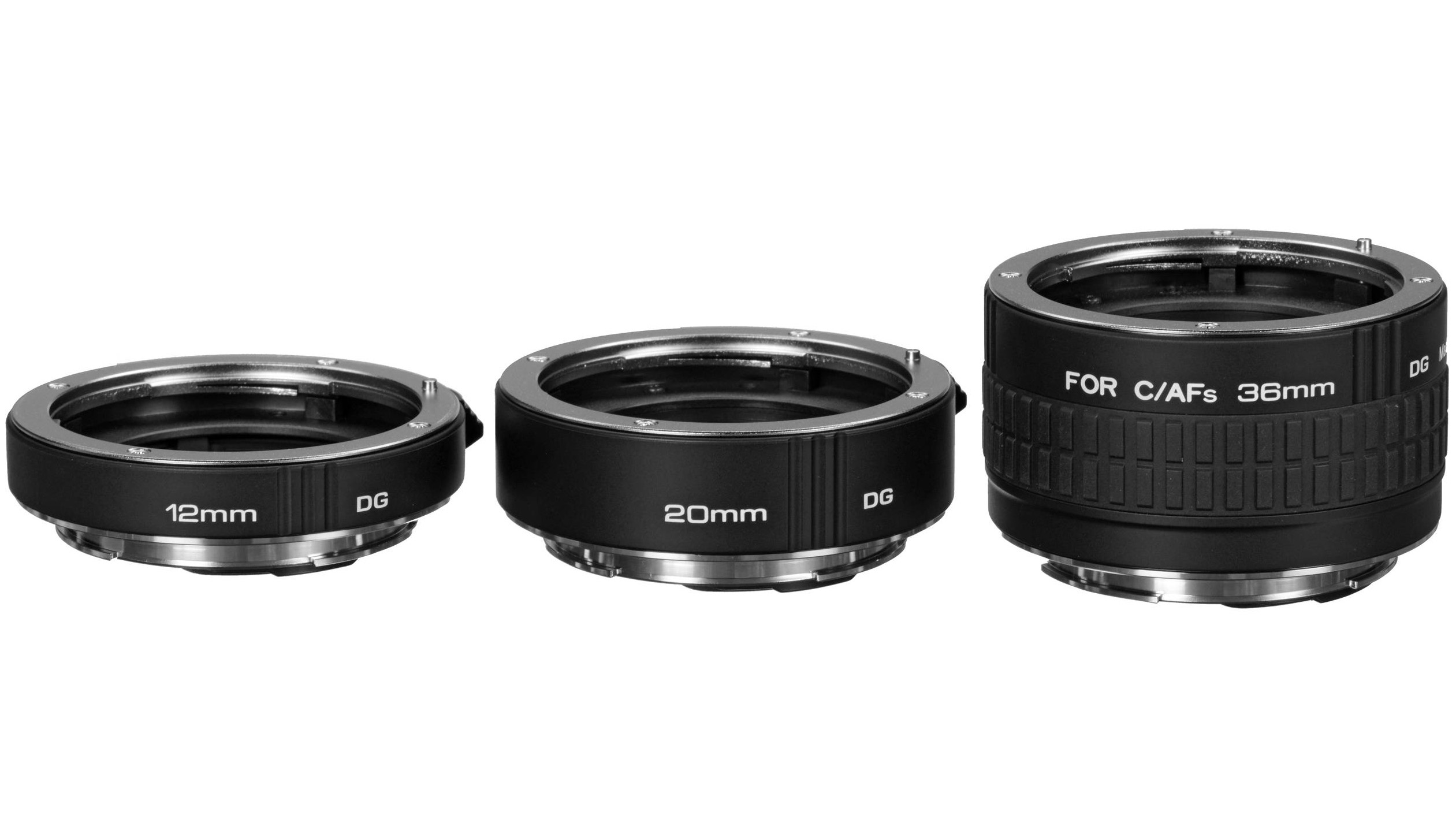
4. Kenko Auto Extension Tube Set DG
Specifications
Reasons to buy
This extension tube set strikes a nice balance between cost, versatility and features. The 12mm, 20mm and 36mm tube lengths can be used individually, or combined when you want to experiment with different magnifications. Each tube contains a set of electrical contacts that maintain autofocus and auto exposure metering, so there’s no need to resort to manual shooting as is the case when using budget extension tubes. These tubes are compatible with most EF and EF-S lenses, and can be used with Canon EOS DSLRs or 35mm film cameras.
Best extension tubes for Canon RF
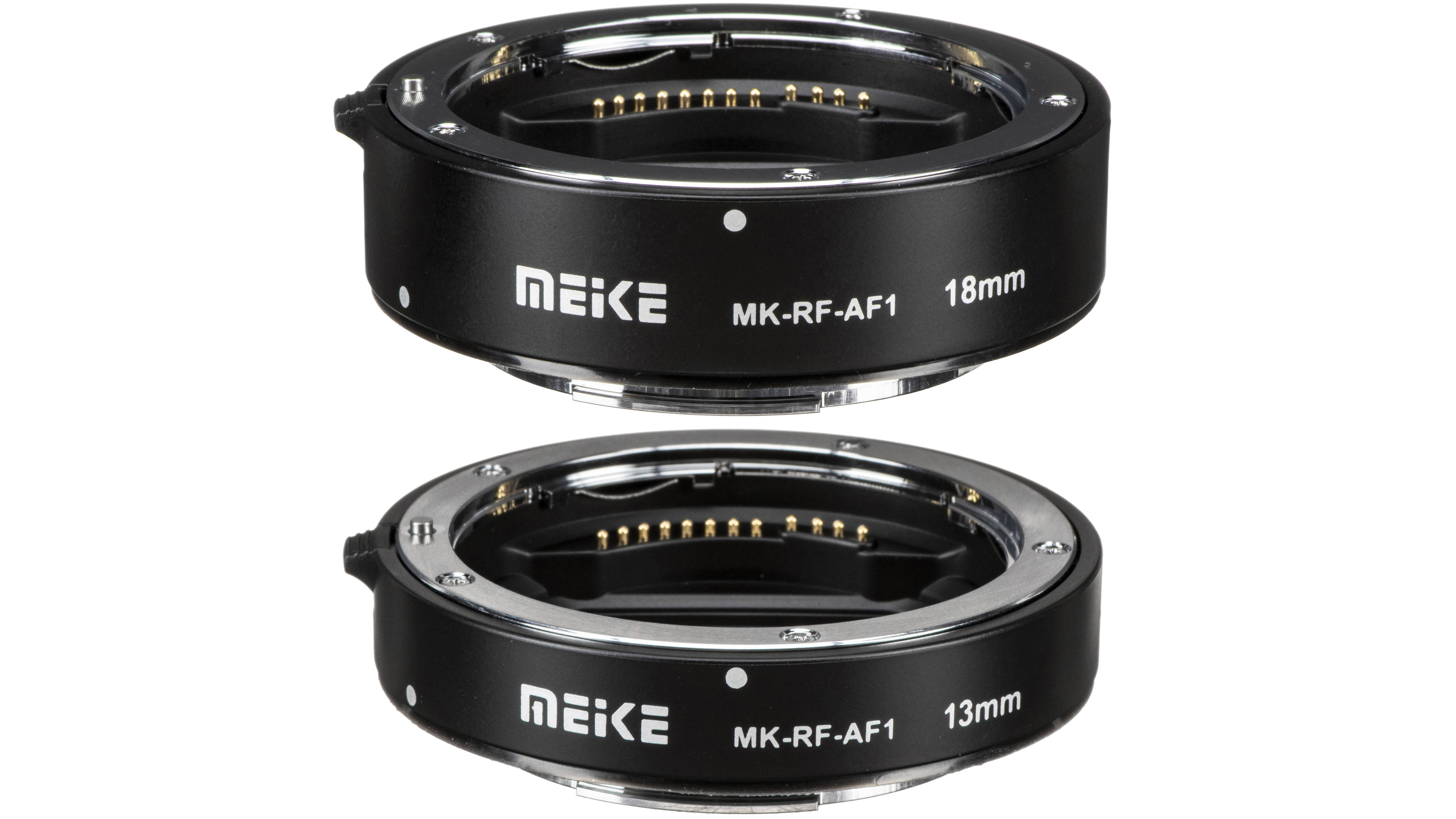
5. Meike MK-RF-AF1
Specifications
Reasons to buy
Reasons to avoid
Canon’s range of native RF-mount macro lenses is still very limited, so for the time being it can make good sense to give a non-macro RF-mount lens close-up capabilities by teaming it with one or more extension tubes. Unlike some extension tube sets, this Meike kit contains 2 rather than 3 tubes, but they’re useful 11mm and 18mm lengths, which is a decent compromise between high magnification and practical depth of field. Of course you can also stack both together for a 29mm combined extension and even greater magnification. What’s more, despite the very reasonable price, both tubes contain copper contacts to maintain AF and auto exposure functionality between camera and lens.
Best extension tubes for Nikon F

6. Kenko Auto Extension Tube Set DG
Specifications
Reasons to buy
With a choice of three tube lengths – 12mm, 20mm and 36mm – this versatile extension tube set gives you a selection of options to balance magnification with depth of field, with the option to stack two or all three tubes for an even larger reproduction ratio. Each tube has its own electrical contacts to maintain autofocus and auto exposure metering, and all feature metal lens mounts for a quality feel.

7. Fotodiox Macro Extension Tube Set
Specifications
Reasons to buy
Reasons to avoid
Want to experiment with macro photography for the absolute minimal cost? This shoestring budget extension tube set is hard to beat. Just like more expensive options, you get three separate tubes – in this case, 7mm, 14mm and 28mm, and they can be combined for greater magnification possibilities. Of course at this price you can’t expect many (or any!) luxuries, so there are no electrical contacts, meaning you’ll have to manually focus your lens, and shoot in manual exposure mode. However given the careful and considered nature of macro photography, this isn’t such a bad thing.
Best extension tubes for Nikon Z
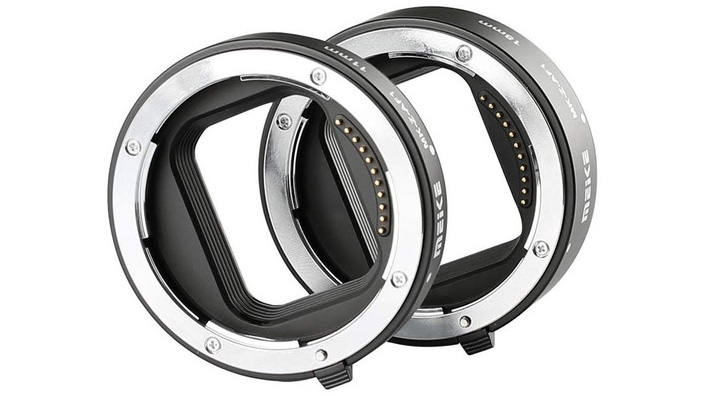
8. Meike MK-Z-AF1
Specifications
Reasons to buy
With dedicated macro lenses for Nikon Z cameras still relatively limited in choice, extension tubes can be a very handy addition to your Nikon Z kit bag. What’s more, these particular tubes are refreshingly cheap, and yet they still maintain exposure metering and autofocus with an AF attached lens. The 11mm and 18mm tubes give a useful choice of magnification, and both have metal mount rings for extra durability. At this price, you simply can’t go wrong!
Best extension tubes for Sony E
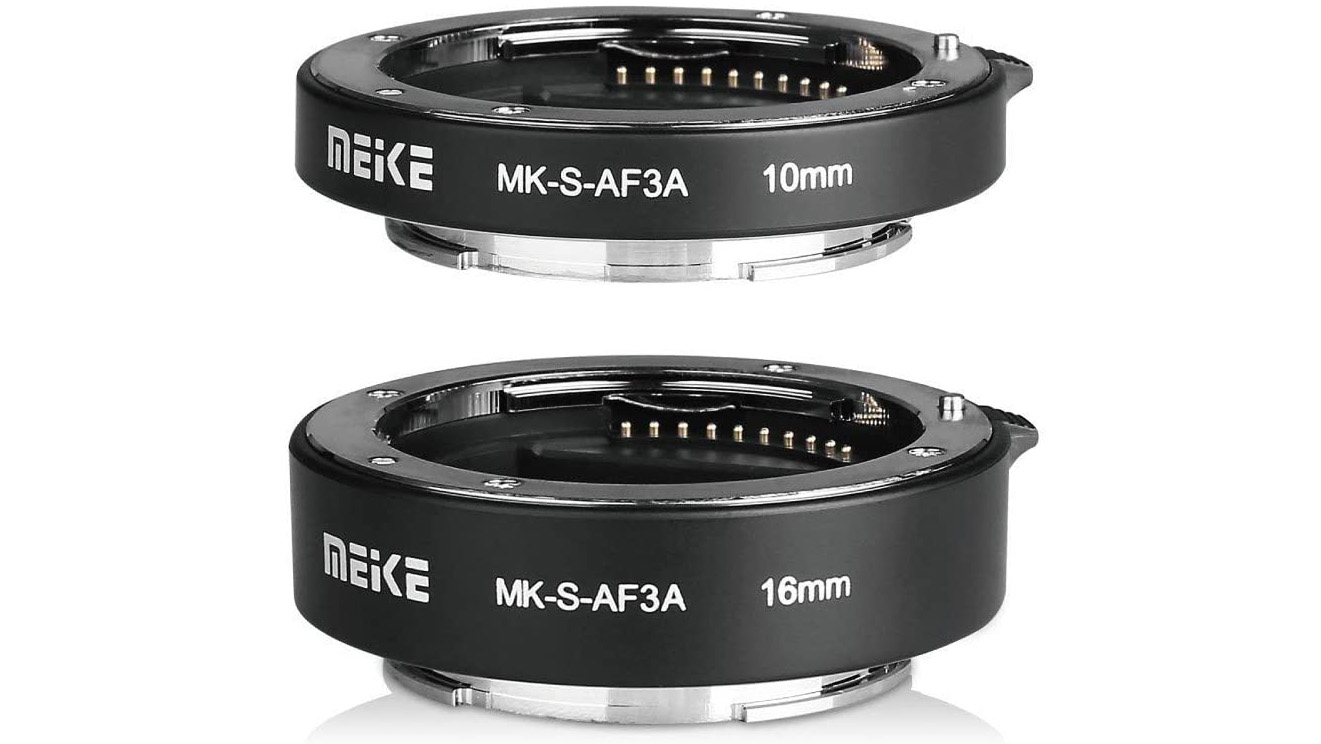
9. Meike MK-S-AF3A
Specifications
Reasons to buy
Reasons to avoid
These extension tubes are compatible with pretty much any E-Mount Sony camera, from older NEX-series APS-C cameras through to current A6000-series models and even full-frame A7 and A9 bodies. You only get two tubes in the kit rather than three, but they cover versatile 10mm and 16mm extensions, and can be combined to form a 26mm tube for a really large magnification ratio. Both tubes feature electrical contacts, so you can rest easy that your lens’ autofocus will still be usable with the tubes fitted, and your camera can maintain auto exposure metering.
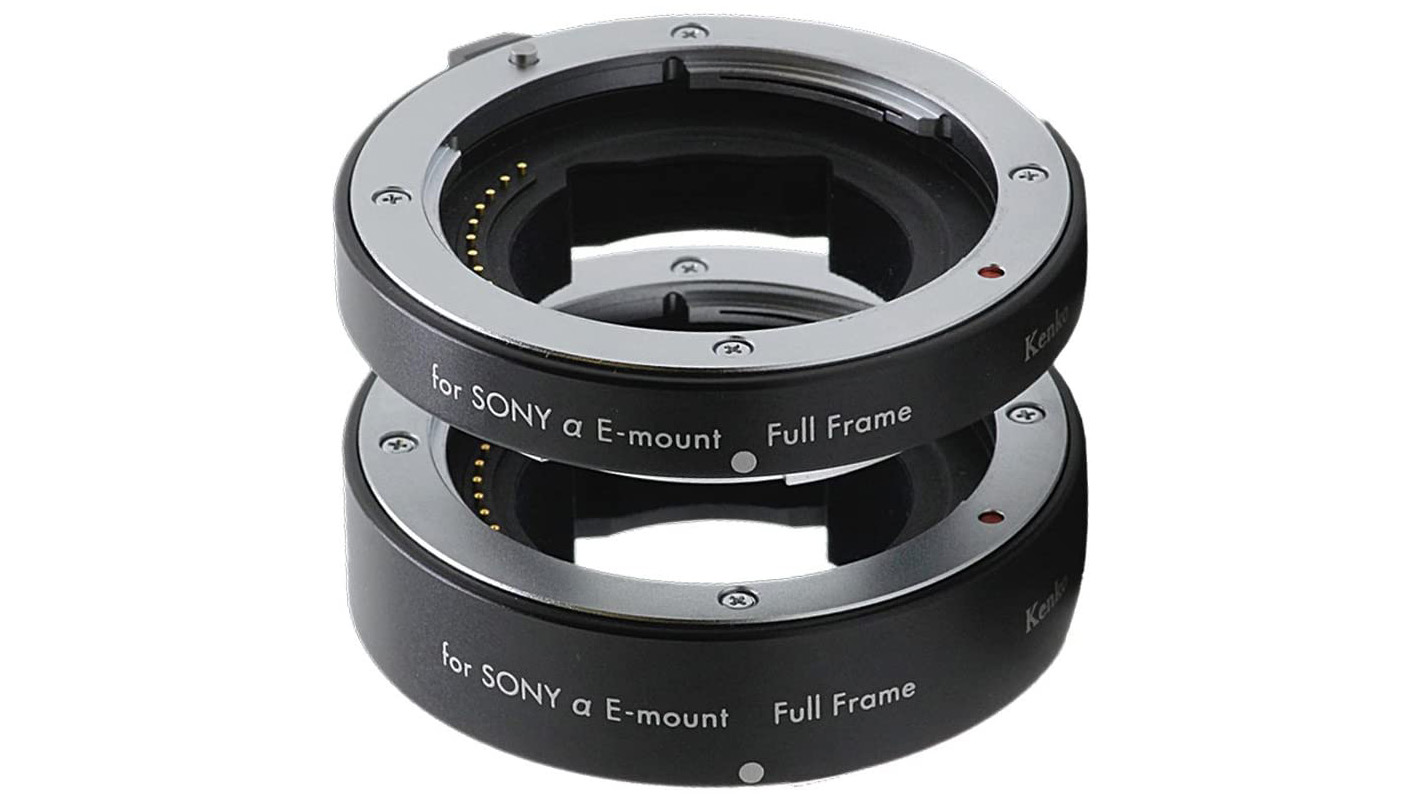
10. Kenko Auto Extension Tube Set DG
Specifications
Reasons to buy
Reasons to avoid
Kenko’s DG extension tubes are available for various different camera mounts, but where the Canon EF and Nikon F DSLR tube sets include 3 separate tubes, this Sony set contains only two. Your options are 10mm and 16mm tube lengths, both of which are compatible with APS-C and full-frame Sony E-mount mirrorless bodies. Full electrical communication between camera and lens is maintained thanks to contacts on both tubes. However, these tubes are almost indistinguishable from Meike’s MK-S-AF3A E-mount extension tubes (above), which cost a fraction of the price of this Kenko set.

11. Fotodiox Macro Extension Tube Set
Specifications
Reasons to buy
Reasons to avoid
While the vast majority of extension tube kits for Sony E-mount cameras just give you 10mm and 16mm tube lengths, this set contains 7mm, 14mm and 28mm options. Combine two or all three tubes and even more fun can be had with high macro magnification. You can attach these tubes to any NEX or A6000-series APS-C mirrorless Sony body, or a full-frame FE-mount camera, and each tube has a metal bayonet mount for extra durability. That’s particularly impressive given how unbelievable inexpensive this extension tube set is – it’s a real steal if you’re just experimenting with close-up shooting and don’t want to commit too much cash.
Best extension tubes for Fujifilm X
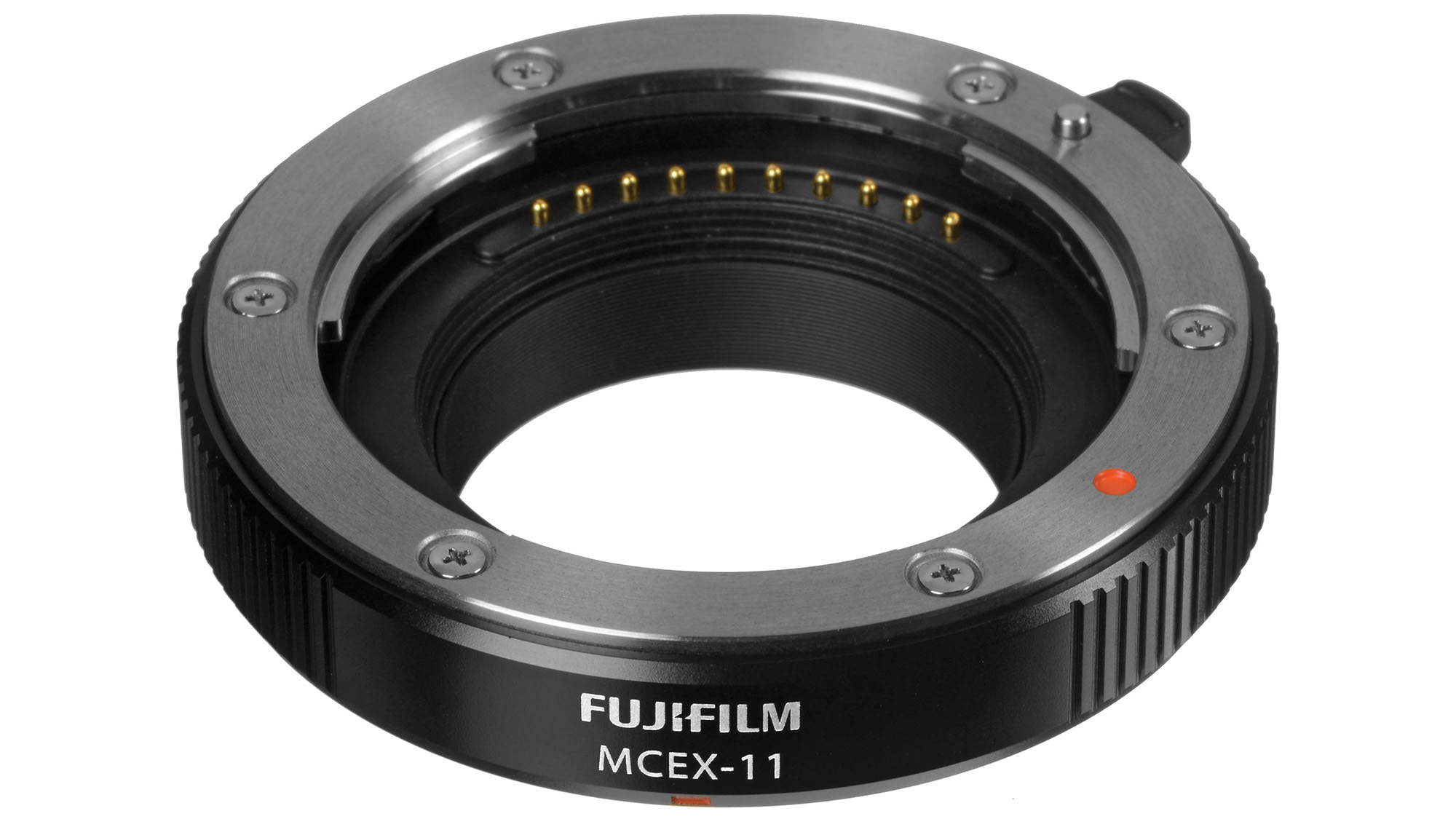
12. Fujifilm MCEX-11
Specifications
Reasons to buy
Reasons to avoid
Fuji X Mount users don’t have to chance it with third-party extension tubes, as Fujifilm offers its own macro tubes, with this 11mm offering being the shortest. Compatible with all XF lenses on X-series cameras, you get own-brand levels of build quality including a metal bayonet mount and electrical contacts to maintain communication with camera and lens.
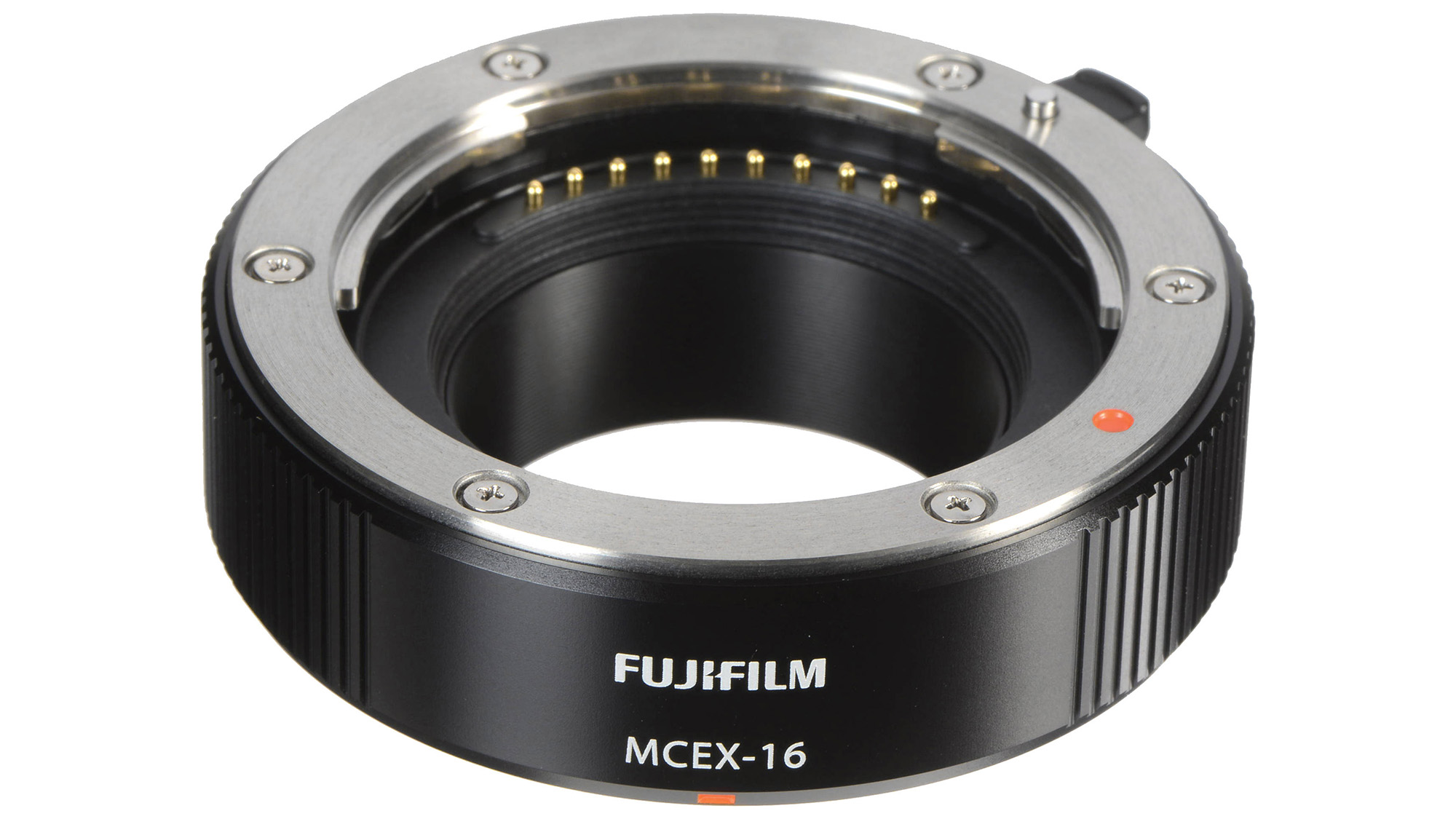
13. Fujifilm MCEX-16
Specifications
Reasons to buy
Reasons to avoid
Need more magnification than Fujifilm’s 11mm extension tube can provide? This 16mm version is the answer, and could even be combined with the 11mm tube for a 27mm extension, giving super-large macro magnification. The combined cost will be considerable, but it’s partly justified by Fujifilm build quality and electrical contacts that maintain AF and AE metering between X-series cameras and XF lenses.
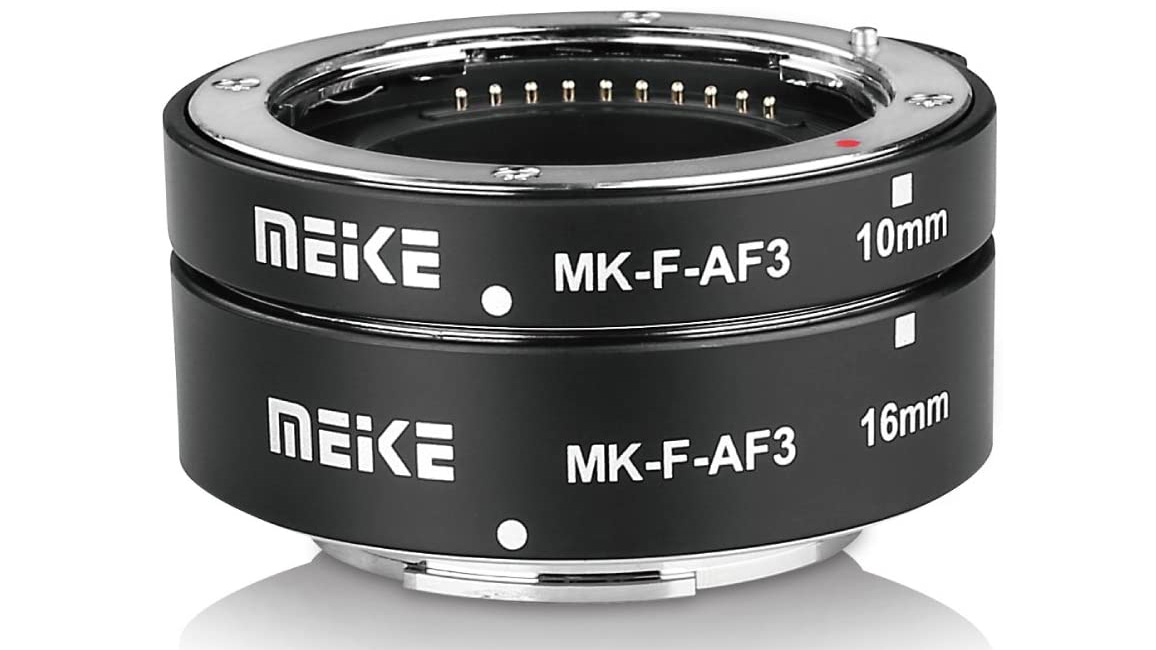
14. Meike MK-F-AF3
Specifications
Reasons to buy
Reasons to avoid
It’s nice to have the guaranteed compatibility of genuine Fujifilm extension tubes, but you sure do pay handsomely for the privilege. This set of two Meike tubes, on the other hand, can be had for less than half the price of just one Fujifilm extension tube, yet you still get electrical contacts for autofocus and auto exposure metering, so you don’t need to resort to manual shooting. The 10mm and 16mm tube lengths strike a good compromise between magnification and getting a practical depth of field, and compatibility is assured with all X-mount mirrorless cameras.
Best extension tubes for MFT
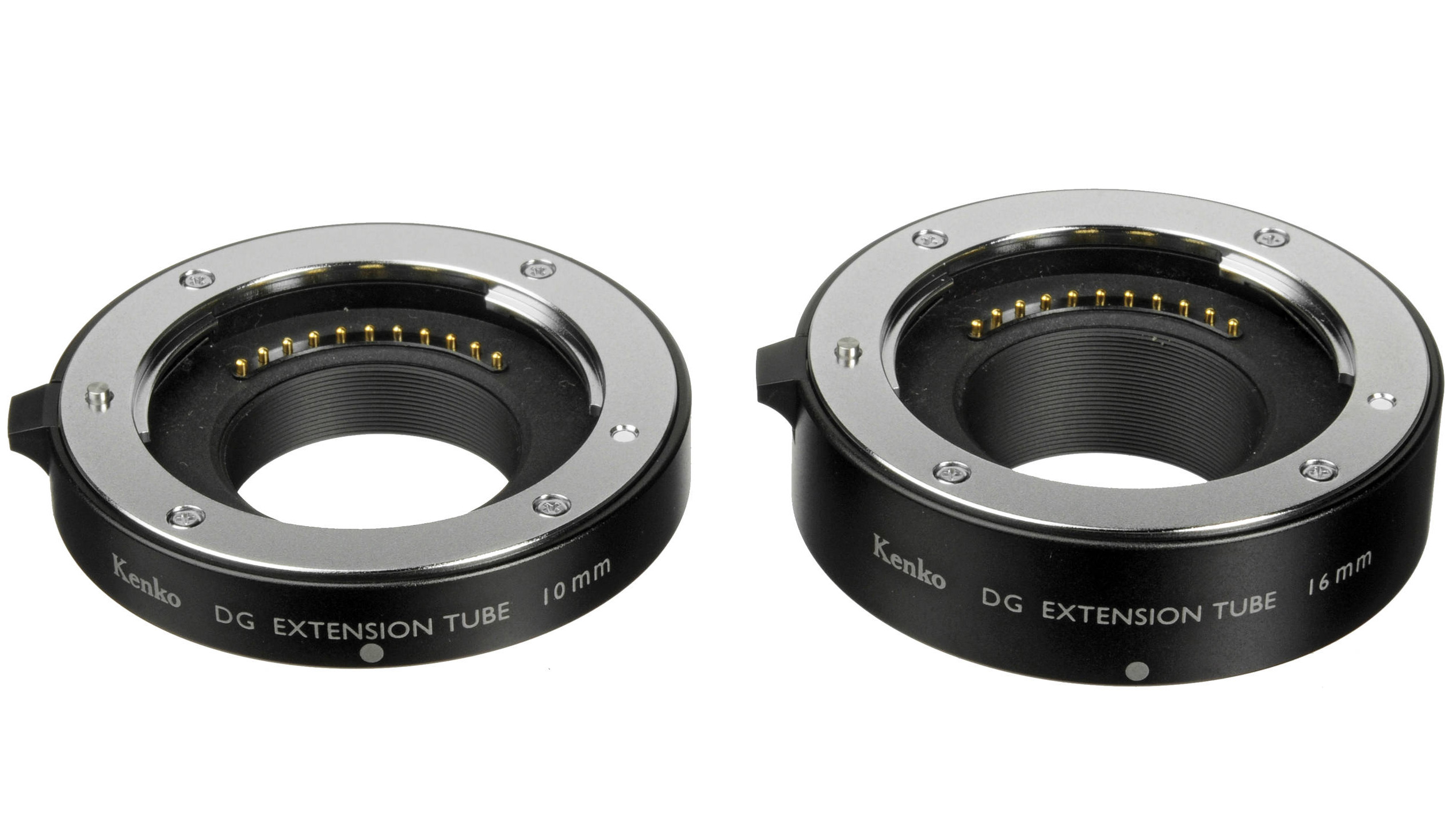
15. Kenko Auto Extension Tube Set DG
Specifications
Reasons to buy
Reasons to avoid
Kenko’s two-tube set isn’t the cheapest option for Panasonic or Olympus Micro Four Thirds cameras, but they are built to last, with metal mounts and the convenience of electrical contacts to enable autofocus and auto exposure communication between your camera and the attached lens. Typically of extension tubes for non-full-frame cameras, you get tube lengths of 10mm and 16mm. You can also stack both for a 26mm combined extension, giving maximum possible magnification with your chosen lens.

16. Fotodiox Macro Extension Tube Set
Specifications
Reasons to buy
Reasons to avoid
If Kenko’s extension tube set is a little over budget, then this triple-tube set-up is definitely the answer. Its bargain price makes it ideal if you’re just experimentation with macro photography and don’t want to commit too much money straight away. Three tube lengths (7mm, 14mm and 28mm) give an excellent range of magnifications, plus you can combine two or all three tubes to really zoom in on your subject. You can’t expect luxuries like electrical contacts at this price, so even if your chosen lens has autofocus, you’ll have to use manual focus when its attached to these extension tubes. Likewise, auto exposure metering will be disabled, so you’ll need to set aperture and shutter speed yourself, too.
Read more:
The best macro lenses
The best close-up filters
The best ringflash for macro photography
The best tripods
The best lenses for food photography
Get the Digital Camera World Newsletter
The best camera deals, reviews, product advice, and unmissable photography news, direct to your inbox!
Ben is the Imaging Labs manager, responsible for all the testing on Digital Camera World and across the entire photography portfolio at Future. Whether he's in the lab testing the sharpness of new lenses, the resolution of the latest image sensors, the zoom range of monster bridge cameras or even the latest camera phones, Ben is our go-to guy for technical insight. He's also the team's man-at-arms when it comes to camera bags, filters, memory cards, and all manner of camera accessories – his lab is a bit like the Batcave of photography! With years of experience trialling and testing kit, he's a human encyclopedia of benchmarks when it comes to recommending the best buys.

